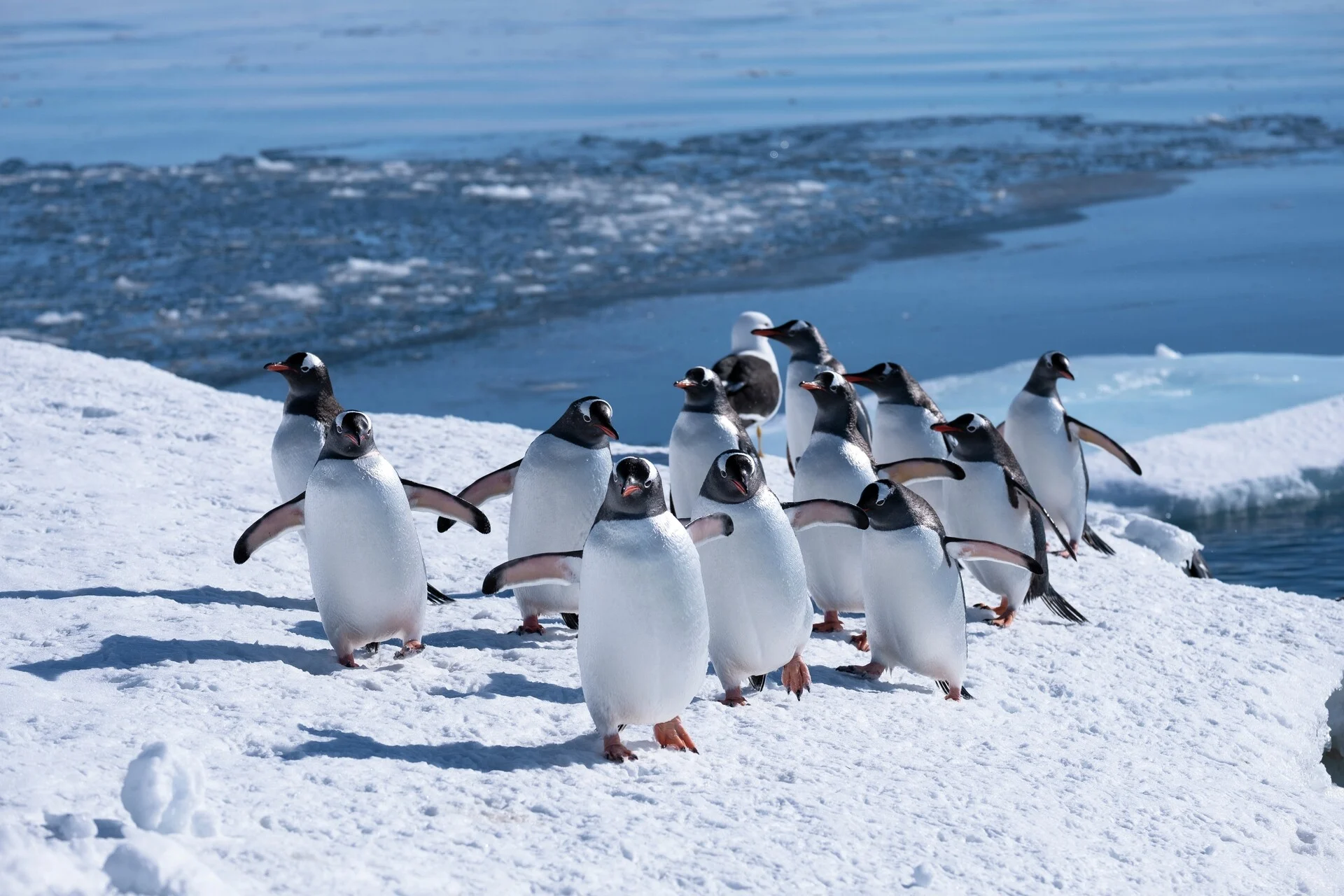Wildlife in Antarctica
Antarctica is the only continent with no significant plant life and no native land mammals, reptiles, or amphibians. Even in the extreme environment of Antarctica, life not only survives but thrives. Its icy seas, isolated icebergs and snow-driven deserts are home to wildlife that surprise and charm all who visit them.
4 mins read
As a place of sub-zero temperatures and harsh winds, it is an understatement to say that Antarctica does not make for a very pleasant habitat. That is, at least, for most animals. But the animals that do live here aren’t like most animals. Each one of them is an inspiring story of adaptability, resilience and cooperation. Let’s meet a few of them.
Icons of the continent
Eight of the world’s 17 species of penguins can be found in Antarctica and in the sub-Antarctic area. They include Adélie, chinstrap, gentoo, king, macaroni, rockhopper, emperor and Magellanic penguins. Around twelve million penguins reside in the relatively mild conditions on the Antarctic Peninsula.
You will never forget going ashore to visit a penguin colony. Yes, they are very loud, and no one will ever describe their smell as enchanting, but you won’t care. Even if we are sure to keep our distance so as not to disturb them, witnessing these charming creatures shuffling around as they go about their business is something that will stay with you forever.
A coat fit for a penguin
All penguins living in Antarctica have feathers devoted entirely to insulation. Penguin feathers are short, densely packed and, cleverly, also overlap. The structure and arrangement of their feathers helps them trap air all around their bodies. A thick coat of fat just beneath the skin completes the armour the hot-blooded penguins need not only to survive but thrive in the coldest place on earth.
The giants below surface
The Antarctic Ocean is a feeding ground for several whale species: blue, fin, humpback, minke, orcas, southern right and sperm whales. You might see these magnificent giants surfacing near the ship and even breaching acrobatically and dramatically out of the water.
Deep breaths
Whales are not fish; they belong to the mammal species known as cetaceans. And like any other mammal, whales need to breathe. This forces them up to the surface every 20 minutes or so. All of the whale species seen in Antarctica have had to migrate from afar, usually swimming thousands of miles. That’s a lot of breaths just to get here. Even with an abundance of food triggered by the Antarctic summer’s 24-hour sunlight, whales never forget to take a break from their around-the-clock feeding frenzy to surface and breathe.
Seal sanctuary
With their bulbous body and head, short snout, and deep, expressive, soulful eyes, there are few animals that will capture your heart like the Weddell seal. A Weddell seal pup just multiplies that cuteness factor by ten.
Due to their thick layer of blubber and fur, Antarctic seals are extremely well-adapted to the freezing conditions. Six different species of seal live in Antarctic waters: Ross, Weddell, crabeater, leopard, fur and elephant seals. Four of these species are ice-habitat specialists, breeding on the sea ice in spring. Leopard and Ross seals tend to be solitary, whereas Weddell and crabeater seals form breeding groups or colonies.
Seals are carnivorous and, depending on species, eat fish, squid or krill. The leopard seal will also eat penguins and other seals. Seals can dive to more than 600 m in search of food and have specially adapted eyes for underwater vision in low light levels. While underwater, seals call to one another, and this can sometimes be heard above on the ice.
It’s all in the ears
There are two natural groups of seals: true seals and fur seals. True seals differ from fur seals, such as sea lions, in that they have no outer ears and can’t walk on all-fours. Fur seals are also smaller, with adult females weighing only 150 kg. True seals on the other hand, can be massive. A male elephant seal, for example, can weigh an impressive 4 tonnes!
Birdwatcher’s paradise
Penguins aren’t the only birds in Antarctica. Of the countless reasons to go on an expedition cruise to Antarctica, experiencing the rich birdlife is definetly one of them. Apart from the penguins, the Pink-faced Sheatbill is the only bird native to Antarctica. But the region is a true birdwatcher’s paradise that draws millions of birds across 46 non-native species. Keep your eyes peeled for wandering albatrosses, shearwaters, giant petrels, storm petrels, blue-eyed shags, diving petrels, cormorants, sheathbills, skuas, gulls and terns.
